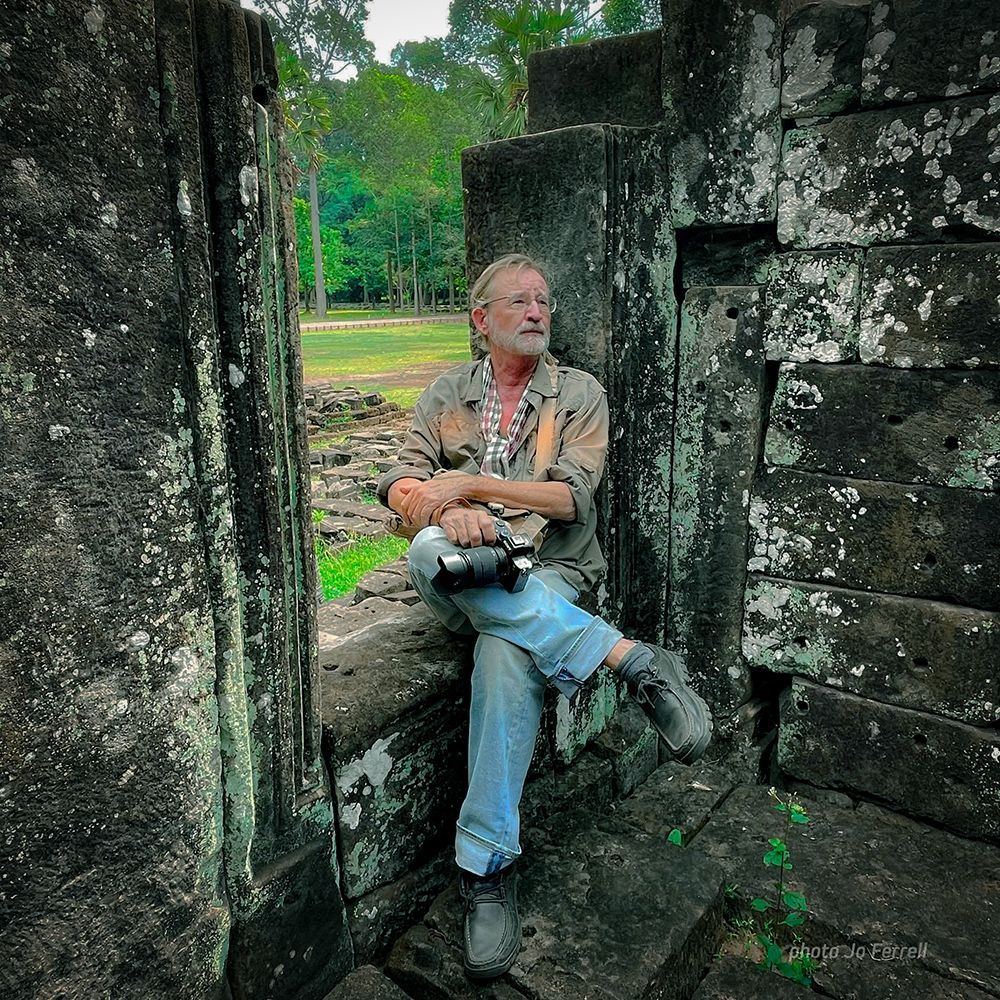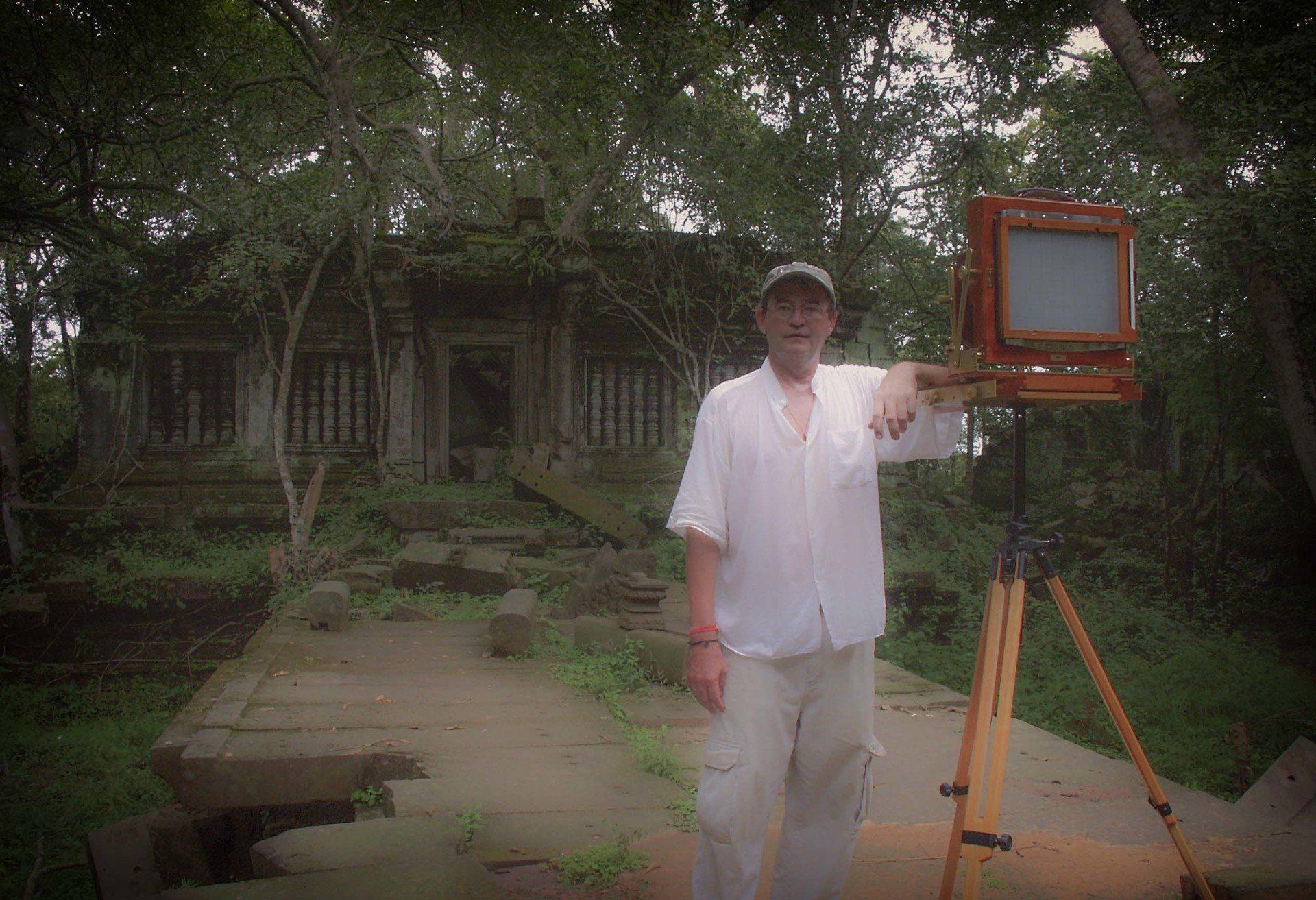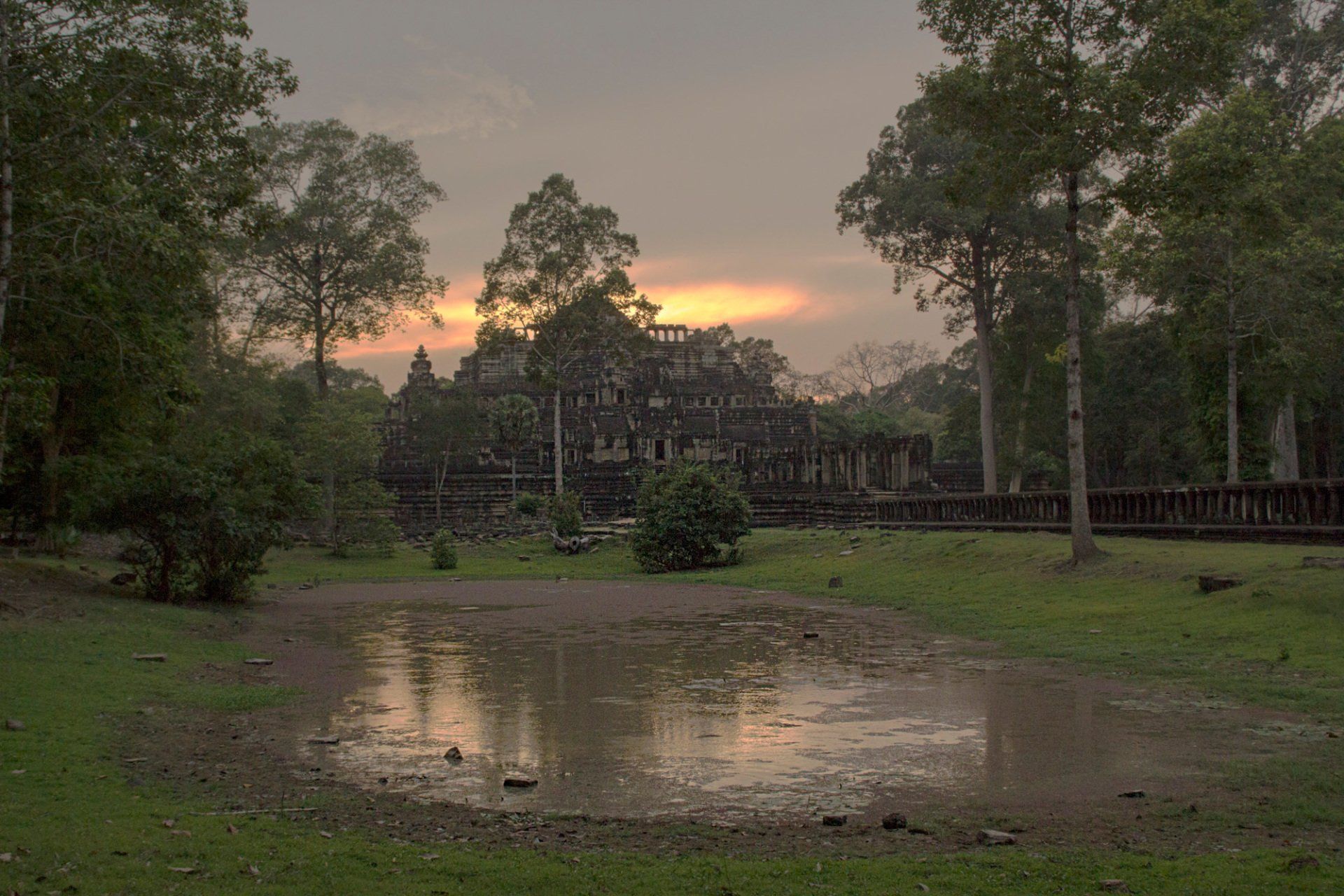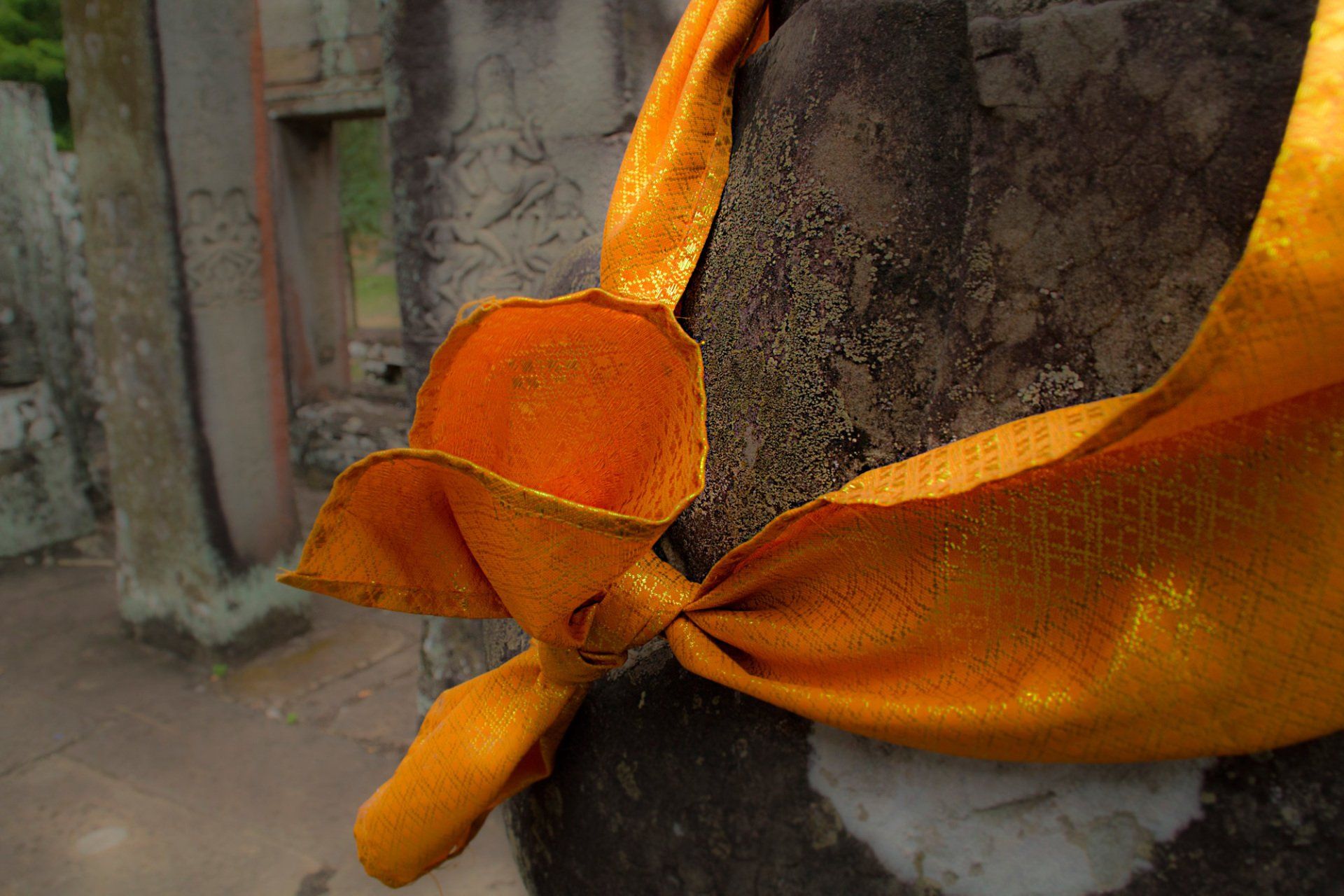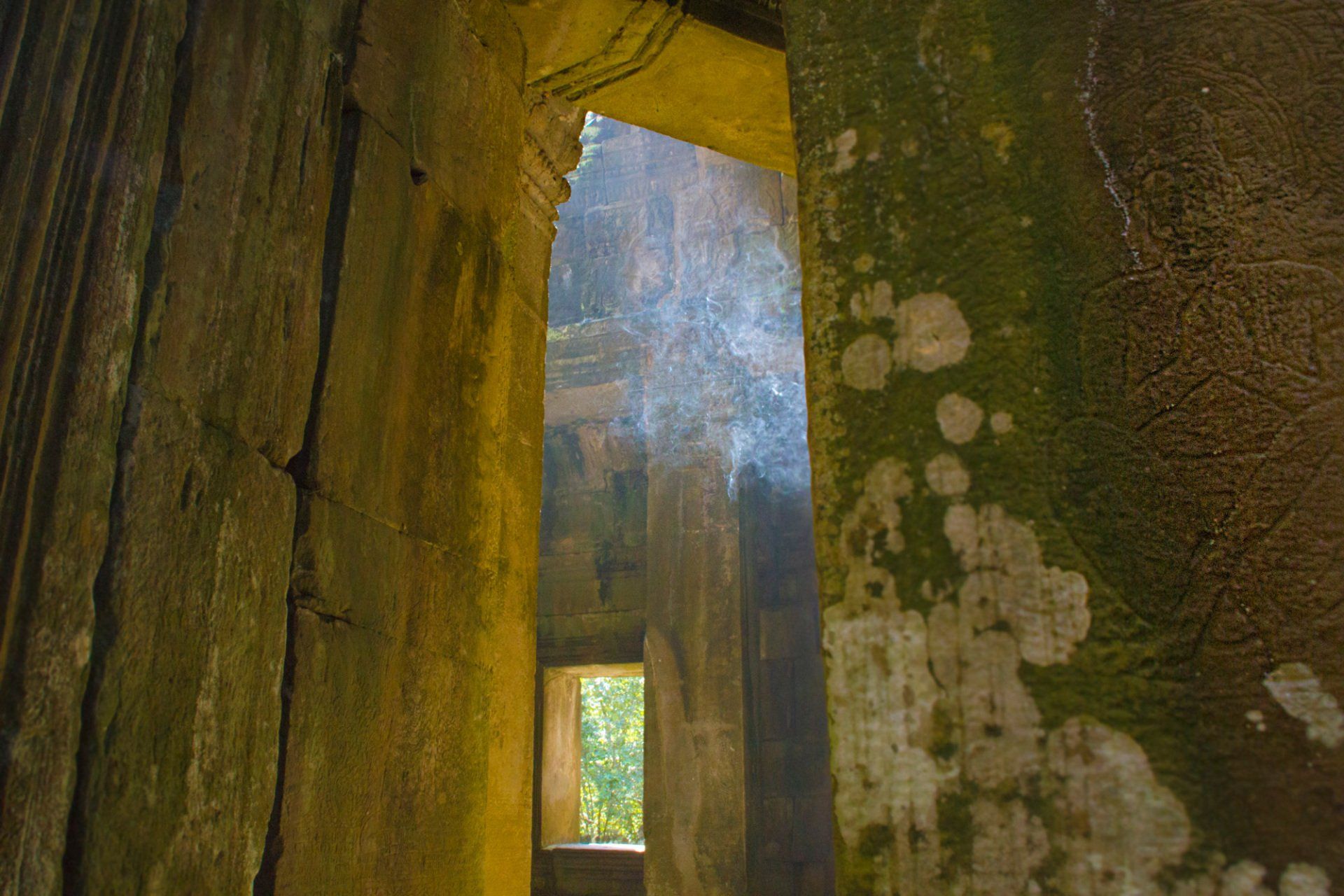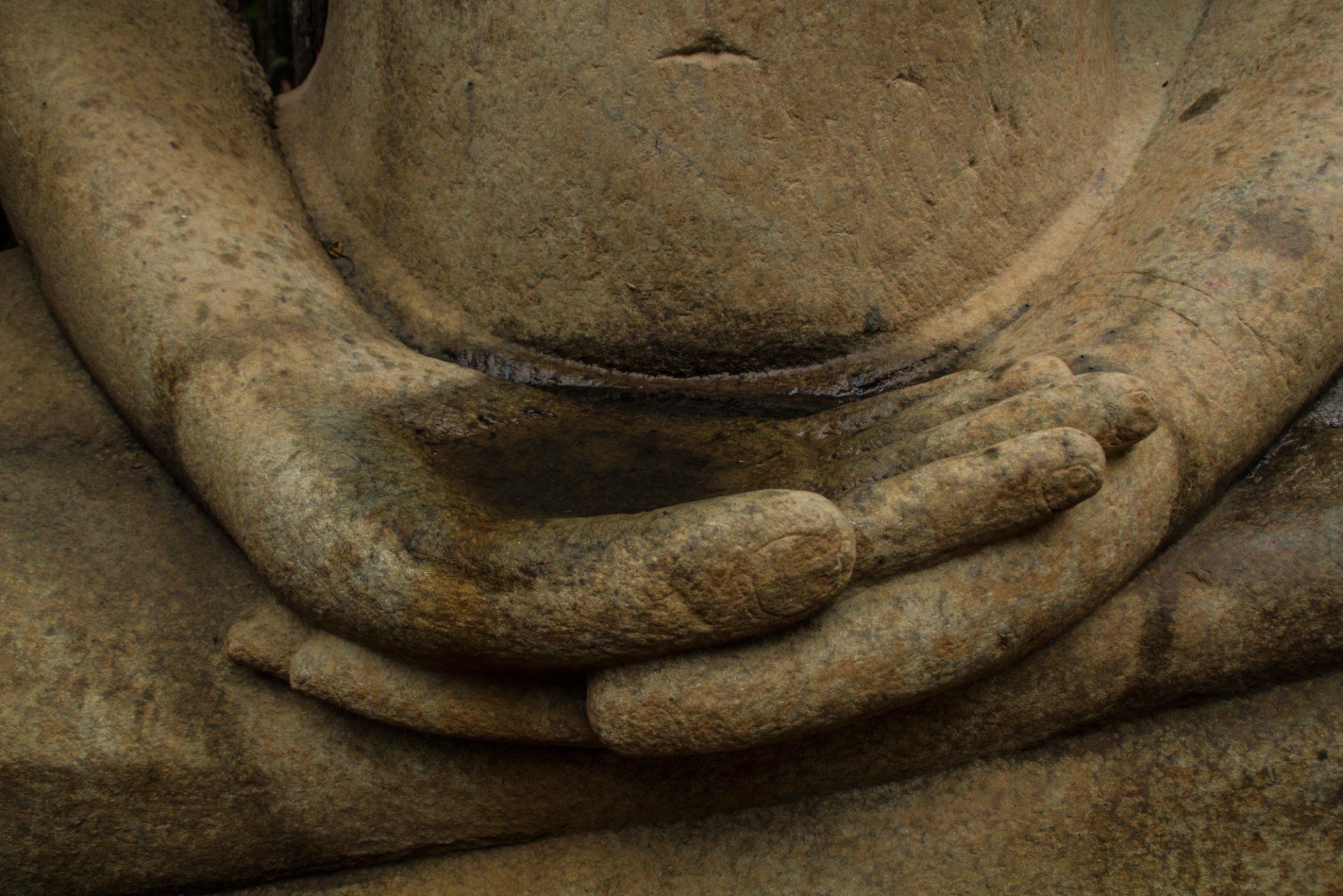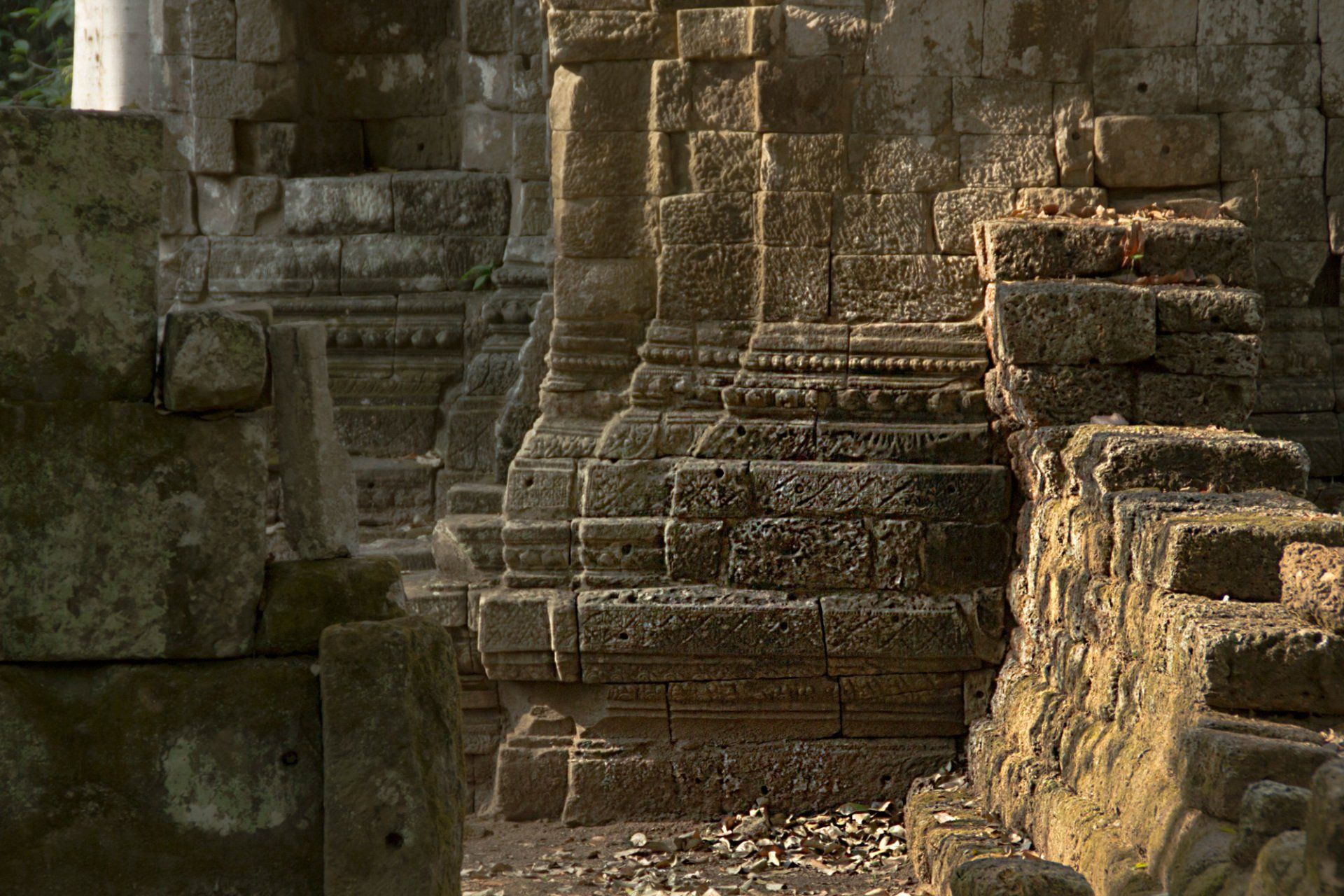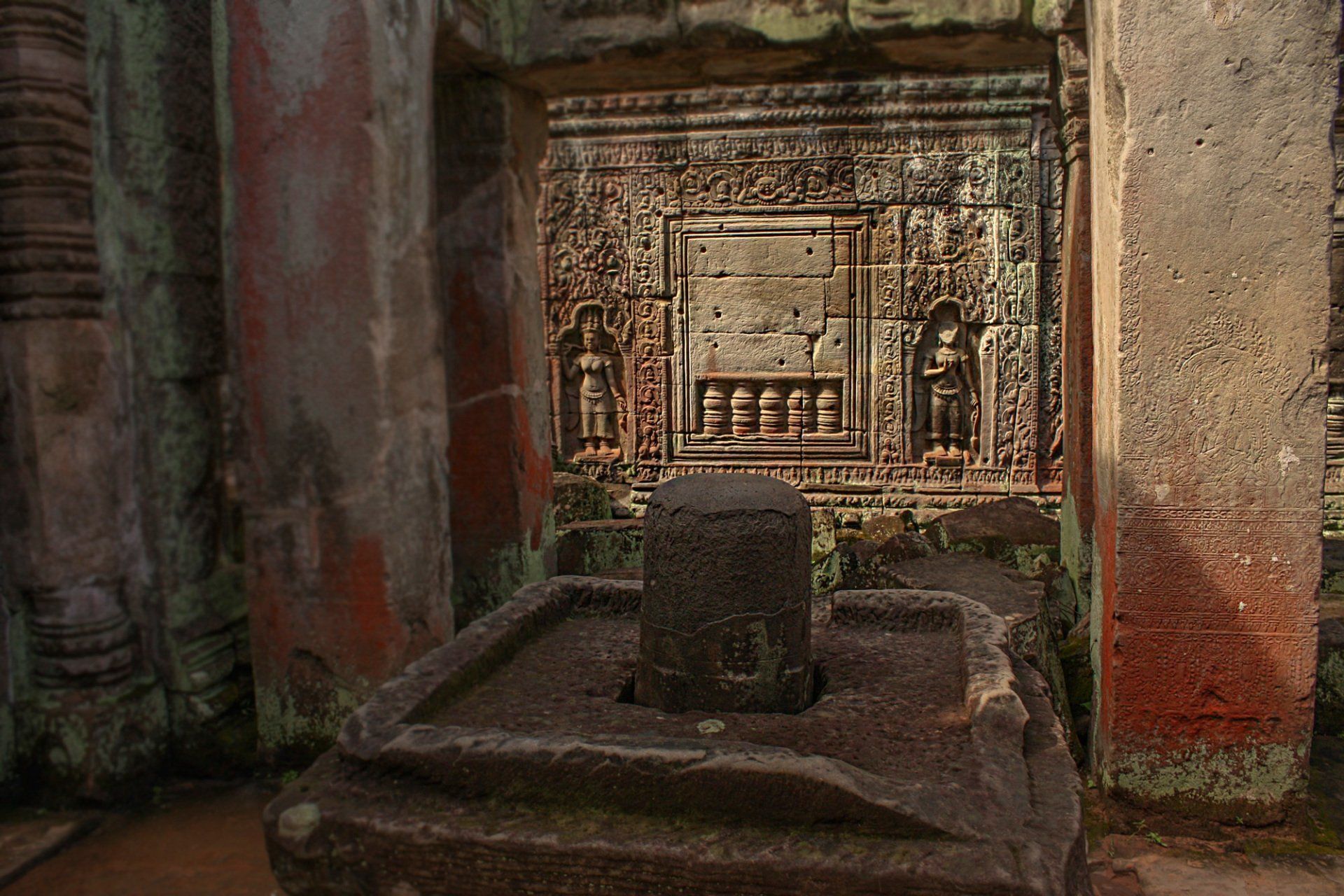A Hermit King Recreates Mythic Mount Meru in a
Southeast Asian Jungle
Considered the world's largest religious architectural complex, Angkor Wat is home to heavenly devas, Hindu deities and the Buddha.
Angkor architecture defined the Khmer Empire covering much of present-day Cambodia, and remains as the outstanding symbol of that nation.
Gallery
Field Notes
Prior to my first trip to Cambodia and the Angkor temples in 2005, I corresponded with Dave Perkes, the owner of the guesthouse where I would be staying in Siem Reap. Dave is also an accomplished photographer who often led photo tours to the Khmer ruins throughout the country. I told him that I was traveling throughout Asia and that I would be bringing my 8 x 10" view camera to photograph the great temples of Angkor. His email responses were not encouraging that I would succeed in using the large format camera . The governing body of Angkor, the Apsara Authority, requires all professional photographers to get permission and to pay an exorbitant fee. Dave warned me that permission can take months to receive if at all and the cost, well who knows how much that will be? It can be as little as $100 or as much as $2000. There is no way of knowing until you get there because it is so arbitrary. I decided to take my chances.
Dave arranged for a tuk-tuk driver named Kimleng. On our first morning, we started at Sra Srang (the resulting photograph is in this gallery). He proved to be an invaluable guide for me. On the first morning when we arrived at the site of the wonderful baray, he grew quite nervous as he saw me set up the 8 x 10" view camera on a tripod. He asked immediately as he looked over his shoulder behind him, if I had permission from the Apsara Authority to photograph; precisely what Dave had warned me about. I told him no. He looked even more worried perhaps knowing that they could confiscate my camera, arrest me, fine me, and even fine him. We photographed through the temples without interference. As the day wore on, however, we began to encounter the Apsara guards. Kimleng was quick on his feet when we were approached. His skills as a diplomat and actor, or just playing dumb, proved to be everything that made my photographs possible. When asked about my camera, Kimleng told them in Khmer, “That is not a camera. This man is an architecture surveyor and this is an instrument used to check the levels of the temples.” To seal the deal, I let the guards go under the dark cloth and see the upside down image on the ground glass. It so confused them that they accepted the explanation. Now, those were the days. As an aside. I was one of many professional photographers Kimleng guided around. He developed an interest in photography and now, fifteen years later, Kimleng is one of the best known photographers in Cambodia. I have made many more trips to Cambodia, and have lived there often and on since 2011.
Listen to an interview of Fred as he discusses the wisdom traditions of Angkor
